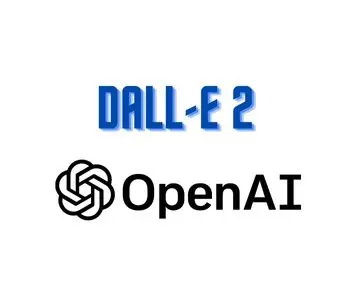
Introduction of DALL-E 2: DALL-E 2 is a neural network-based image generation system developed by OpenAI. It is capable of generating images from textual descriptions, such as “a two-story pink house with a white fence and a red door.” DALL-E uses a transformer architecture similar to that used in the GPT language model, with a deeper and wider network than the original DALL-E. The original DALL-E was trained on a dataset of text-image pairs, while the newer version (DALL-E 2) is trained on a much larger dataset and is able to generate a wide range of images and do so more quickly than the original.
Features of DALL-E 2:
- It is a neural network-based image generation system that can generate high-quality images from textual descriptions.
- It uses a transformer architecture similar to that used in the GPT language model, with a deeper and wider network than the original DALL-E.
- It is trained on a large dataset and is able to generate a wide range of images.
- It can generate images quickly, making it useful for real-time applications.
- It can generate images of objects and scenes that do not exist in the real world, allowing for a greater degree of creativity and flexibility in image generation.
DALL-E 2 VS CHATGPT:
DALL-E 2 is an image generation system, while GPT-3 (short for “Generative Pre-training Transformer 3”) is a language generation system. DALL-E2 is capable of generating images from textual descriptions, while GPT-3 is capable of generating human-like text in a wide range of styles and formats.
One key difference between the two is the type of output they produce: DALL-E 2 generates images, while GPT-3 generates text. Another difference is the type of input they require: DALL-E 2 takes a textual description as input and generates an image based on that description, while GPT-3 takes a prompt (a piece of text or a set of keywords) as input and generates text based on the prompt.
HOW TO USE DALL E2:
DALL-E 2 is a neural network-based image generation system developed by OpenAI. It is capable of generating images from textual descriptions, such as “a two-story pink house with a white fence and a red door.”
To use DALL-E 2, you can send a request to the DALL-E API with a textual description of the image you want to generate. The API will return the generated image in response to your request. You can use the generated image in a variety of applications, such as creating social media content, generating training data for machine learning models, or creating custom graphics for websites or presentations.
There are a few different ways you can use DALL-E 2, depending on your needs and resources:
- You can use the DALL-E API directly to send requests and receive responses. This requires some knowledge of programming and API usage.
- You can use one of the available DALL-E API client libraries, which provide an easier-to-use interface for making API requests and handling responses.
- You can use one of the available DALL-E integrations or plugins, which allow you to use DALL-E 2 within other tools or platforms, such as a chatbot or a content management system.
Future of DALL-E2
It is difficult to predict the exact future of DALL-E2 or any other technology, as it depends on a variety of factors such as market demand, technological advancements, and competition. However, it is likely that image generation systems like DALL-E2 will continue to be developed and improved upon in the coming years.
One potential application for DALL-E2 and other image generation systems is in the field of content creation. By generating images from textual descriptions, these systems can help businesses and individuals create high-quality graphics and visual content more efficiently. They could also be used to generate training data for machine learning models, or to create custom graphics for websites or presentations.
It is also possible that image generation systems like DALL-E 2 could be used in a wider range of applications in the future, as the technology continues to advance and become more widely adopted.
